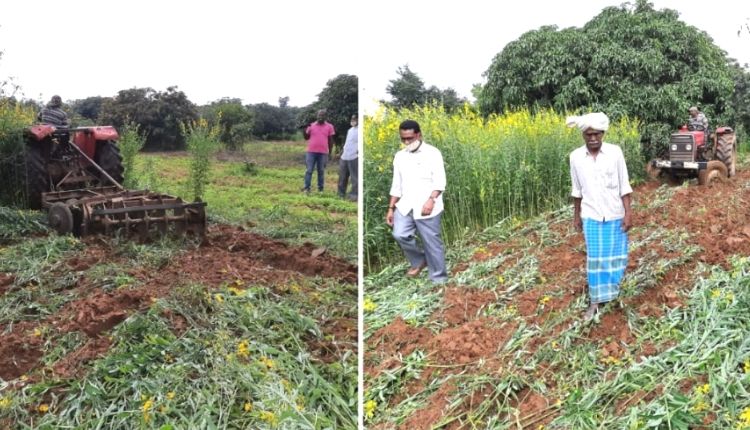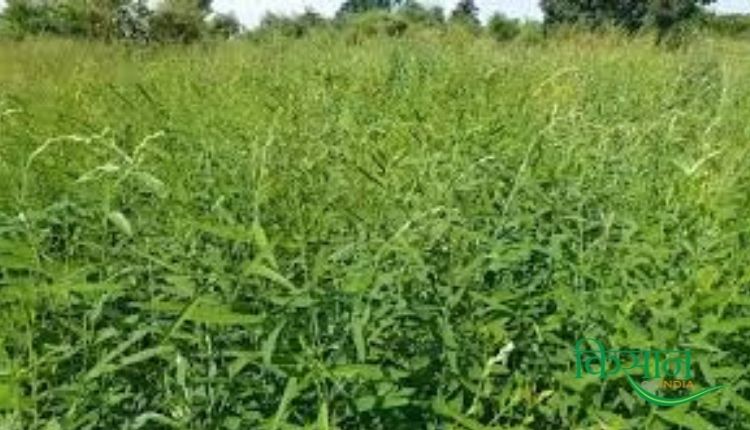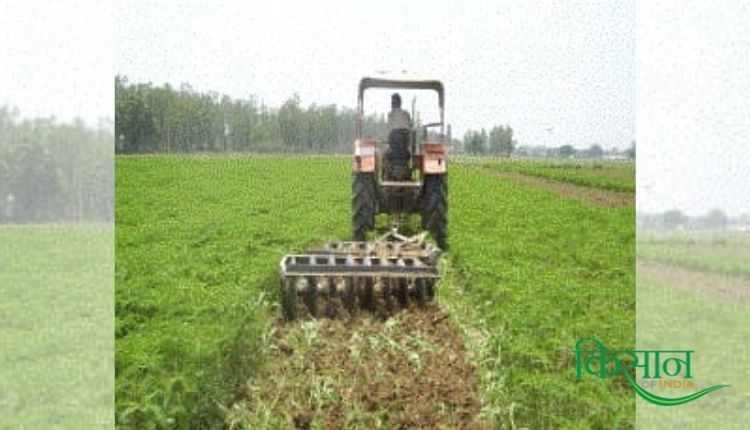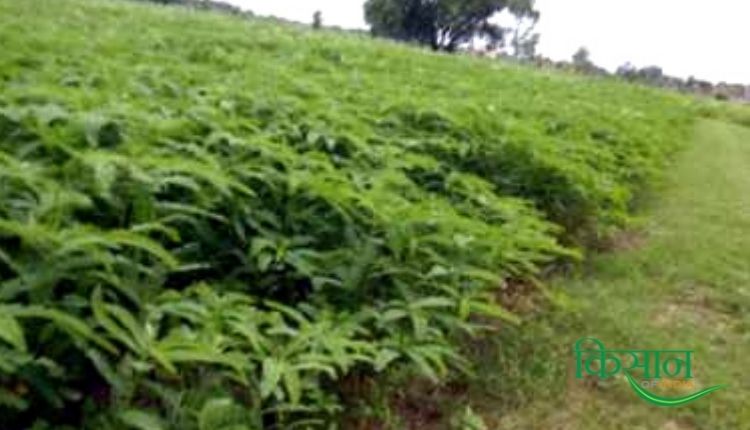Green manure is ‘Sanjeevani Booti’ for farming, know from agricultural scientist Dr. Bhupendra Singh how production will increase at low cost
Know in which months green manure should be sown
Indiscriminate use of chemical fertilizers in crops is not only deteriorating our health, but due to this the fertility of the soil is also decreasing day by day. A part of the farmers’ income is spent on chemical fertilizers only. Therefore, it has become necessary now that the farmers go towards the alternative of chemical fertilizers. Farmers should adopt such methods, which increase the fertility of the soil and do not incur much cost. Green manure is a good option to increase the fertility of the soil.
How green manure is effective in increasing the fertility of the soil?
How farmers can get good yield of crops by using green manure? On all these points, Kisan of India had a special conversation with Dr. Bhupendra Singh, Agricultural Scientist of the Krishi Vigyan Kendra, Burhanpur, Madhya Pradesh.
Dr. Bhupendra Singh says that after the harvesting of wheat, the fields usually remain empty in the month of May-June. During this time many types of harmful weeds get deposited in the fields. Because of this, the nutrients of the soil are damaged. Along with this, due to continuous unbalanced manure and fertilizer, the health of the soil is also adversely affected. Dr. Bhupendra Singh says that because of this, farmers will find it difficult in whatever crop they plant.

Dr. Bhupendra Singh told that an easy solution to deal with all these problems is Green Manure i.e. green manure. Under this, some such thick leafy crops are planted in the fields in the months of May-June, which grow quickly. They do not allow weeds to grow. These prolific crops of one and a half to two months old are ploughed in the fields and mixed. This gives green manure to the fields and improves their health. Simply put, the use of green manure reduces the cost of chemical fertilizers. Green manure is called an auxiliary crop, which is cultivated to increase the nutrients in the soil and complete the organic matter in it.

How to apply green manure crops?
Dr. Bhupendra Singh said that for the coming Kharif season, farmers can plant Sunai, Dhincha, Cowpea, Moong and Guar crops for green manure in the fields. Sunai is sown in those areas where there is more rainfall. Dhicha can be grown in areas with low rainfall. Guar crop can be planted in low rainfall i.e. sandy soil and less fertile areas. Cowpea can be planted in an area with good drainage. Moong and urad are planted in Kharif or summer season.
25 kg seed is required per acre for dhaincha crop. For Sunai, 32 to 36 kg per acre is required. Seed requirement of 12 to 16 kg per acre is required for mixed crop.

According to agricultural scientist, sowing of green manure crops should be done after light irrigation or light rain in the field. The right time for sowing green manure crops is from April to July. Before sowing, plow the field well and make it fine. It is important to have good moisture in the soil before sowing. Row to row distance should be 45 cm. The depth of the seed should be 3-4 cm. At the same time, before sowing the seed, soak it in water for a night. Apply phosphorus at the rate of 16 kg per acre. Nitrogenous fertilizers are not used in this. However, for the first time in crop growth, nitrogen can be used at the rate of 4 to 6 kg per acre.
Also Read:Natural farming reduced the cost and increased profit for this farmer of Andhra Pradesh
More fertilizer available in less cost
Dr. Bhupendra Singh told that by plowing the Dhincha crop till the first week of July, then mixing it in the fields can get good yield of paddy. Their leaves are heavy and dense. It takes about 40-50 days for the crop to be ready. The length of the crop reaches three feet before flowering. The standing crop should be finely chopped with a harrow and mixed in the soil. Water should be applied to the field at the time of its harvesting. Due to watering, it rots very quickly and gets mixed in the soil.
Increases the physical structure of the soil i.e. yield potential. This process is also not very expensive. The cost of seed and tillage does not exceed one and a half thousand rupees per acre. It gives hundreds of quintals of green manure. He told that these crops can be ploughed or cultivated by overturning in the field with Pata. If the field is filled with 5-6 cm of water, it takes less effort to turn over and press it into the soil. Plowing should be done in the same direction from which the plants were dropped. After this, the field should be filled with 4-6 cm of water for eight to ten days.

Green manure will replenish nutrients
According to Dr. Bhupendra Singh, 34-42 kg of nitrogen per acre can be obtained from Dhincha in this way. 35-52 kg Nitrogen per acre can be obtained from Sunai, 30-35 kg Nitrogen per acre from Cowpea, 27-35 kg Nitrogen per acre from Guar, 14-20 kg Nitrogen per acre from Moong. Green manure with pulse crops has knots in the roots, which act as a soil divider. Whatever crop is taken after turning green manure in the field, its plants will grow well and its quality will be good. Disease infection in the crop will also be less.
In fact, due to the wheat and paddy crop rotation, there is a continuous decline in the fertility of the land. Once upon a time, for better crop rotation, at least one pulse crop was planted in a year. In today’s date, 3 to 4 crops are taken in a year, but in return, chemical fertilizers like DAP, Urea are added to the soil. Now there is a need to take something from the land as well as give it back.
Contact us – If farmers want to share any valuable information or experiences related to farming, they can connect with us via phone or whatsapp at 9599273766 or you can write to us at “[email protected]”. Through Kisan of India, we will convey your message to the people, because we believe that if the farmers are advanced then the country is happy.
You can connect with Kisan of India on Facebook, Twitter, and Whatsapp and Subscribe to our YouTube channel.



